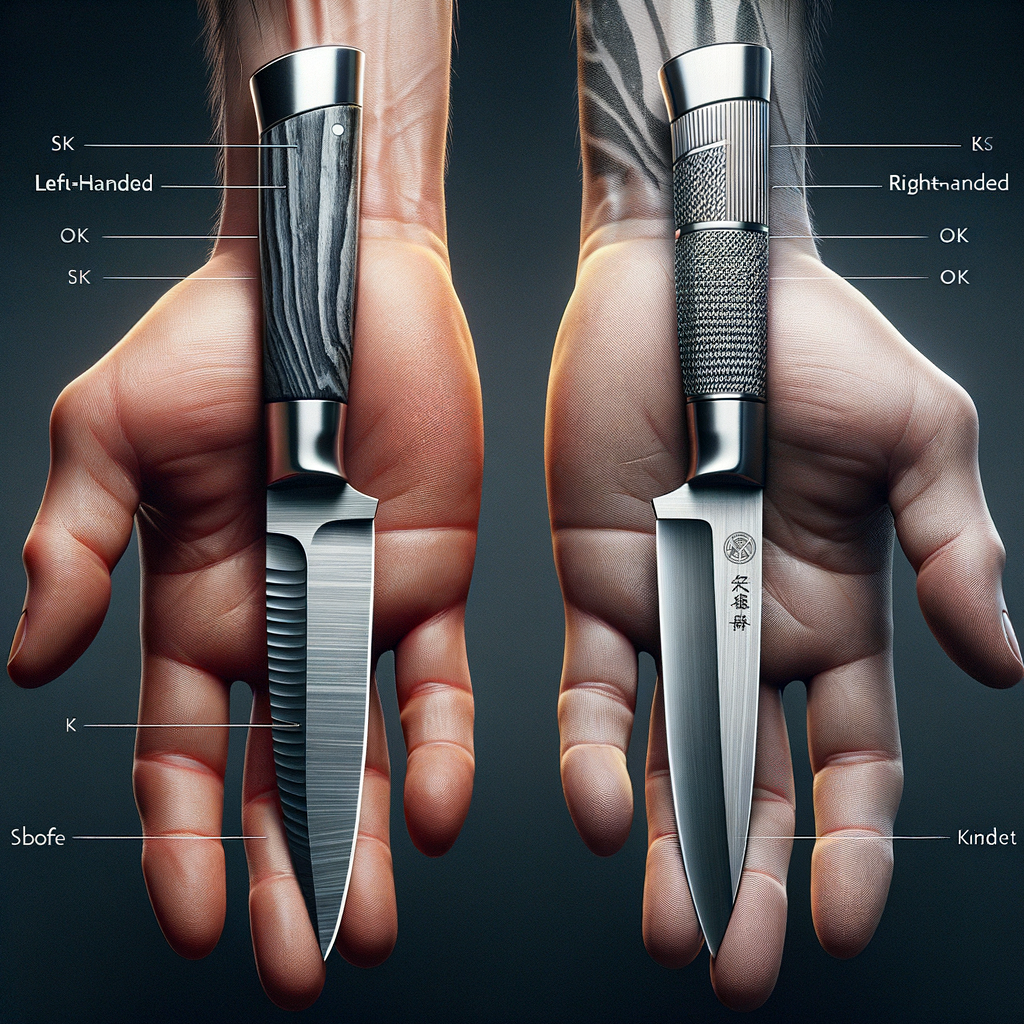Exploring the Craftsmanship of Japanese Knives: The Art of Handedness
Crafted with unparalleled precision and carrying centuries of tradition, Japanese knives stand as symbols of culinary excellence and cultural heritage. Each piece is a masterpiece, specifically designed to echo the skill of its wielder. This exploration delves into the fascinating world of handedness in Japanese knives, showcasing the subtle nuances that cater to the unique needs of chefs.
The Role of Handedness in Japanese Knives
Handedness in Japanese knives is a testament to the artisan’s dedication to the chef’s dominant hand, combining practicality with a deep respect for personal craftsmanship. This ensures knives not only offer impeccable performance but also resonate with the user’s mastery and fineship.
The Specialty of Left-Handed Japanese Knives
The creation of a left-handed Japanese knife is an act of meticulous precision, aimed at serving left-dominant chefs. Crafted as a mirror image of their right-handed counterparts, these knives feature the bevel on the right side. This adaptation enables left-handed chefs to execute their culinary art with effortless control and precision.
The Excellence of Right-Handed Japanese Knives
For the majority of chefs, right-handed Japanese knives, with the bevel on the left side of the blade, are crafted with acute attention to detail. This thoughtful design ensures precision and control, reflecting the artisan’s commitment to excellence for right-handed users.
The Inclusive Design of Ambidextrous Japanese Knives
Embracing inclusivity, Japanese craftsmen have also mastered the ambidextrous knife. These double-beveled blades are designed for chefs who are comfortable using either hand, offering versatility and ease of use to all, regardless of dominant hand.
The Impact of Asymmetrical Bevels on Flavor and Taste
An intriguing aspect of Japanese knife design is the asymmetrical bevel, which not only showcases superior craftsmanship but also enhances the culinary experience. Having an asymmetrical bevel can influence the precision of cuts, contributing to the umami and overall taste of food. This finer cut can alter the texture and surface area of the ingredients, allowing flavors to integrate more effectively and enhancing the overall sensory experience of a dish.
Tradition and Design: A Legacy of Handedness
The emphasis on handedness in Japanese knife-making is rooted in a deep-seated dedication to detail and the quest for perfection. Each knife, with its hand-specific bevel, forges a deeper connection with the chef, transforming into an extension of their artistry and expertise.
Cultural Significance of Bevel Orientation
The unique bevel orientation is a nod to Japan’s rich culture and history, a product of centuries of innovation and tradition. This feature not only distinguishes Japanese knives but also celebrates the endless pursuit of culinary excellence, embodying the spirit of Japanese heritage.
The Union of Craftsmanship and Personal Artistry
A Japanese knife is more than a tool; it is a bridge between traditional craftsmanship and the chef’s personal skill set. Whether used by a left-handed sushi chef for delicate tasks or a right-handed home cook for daily meal prep, each knife elevates the culinary journey, offering unmatched quality and experience.
Conclusion
Japanese knives represent a fusion of functionality, tradition, and exceptional craftsmanship. These custom-fitted tools not only highlight the culture’s reverence for precision but also honor the individual chef’s skill. With the added dimension of handedness, they provide a personalized culinary experience, ensuring every cut, chop, and slice is a testament to tailored perfection.





Leave a Reply